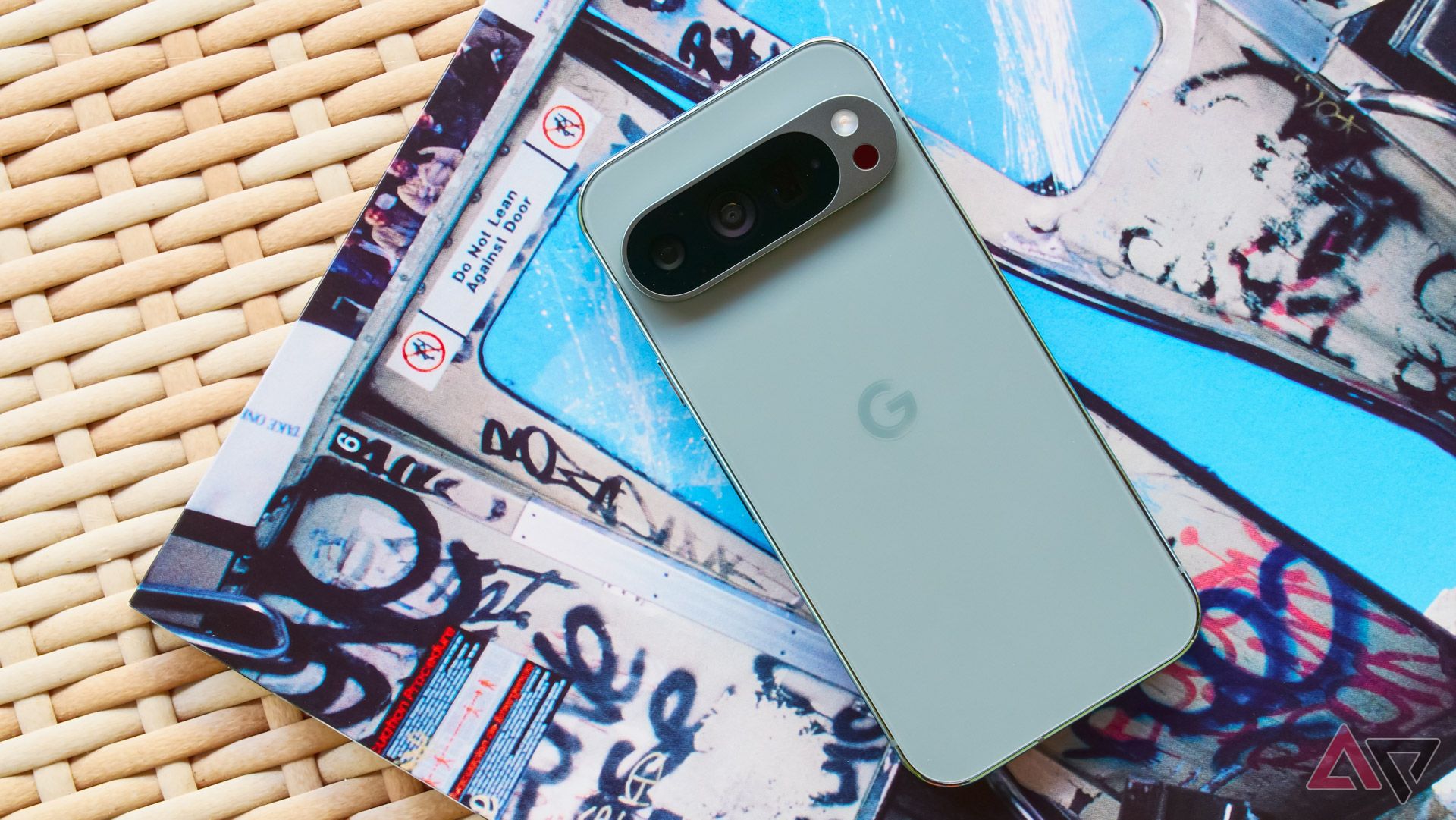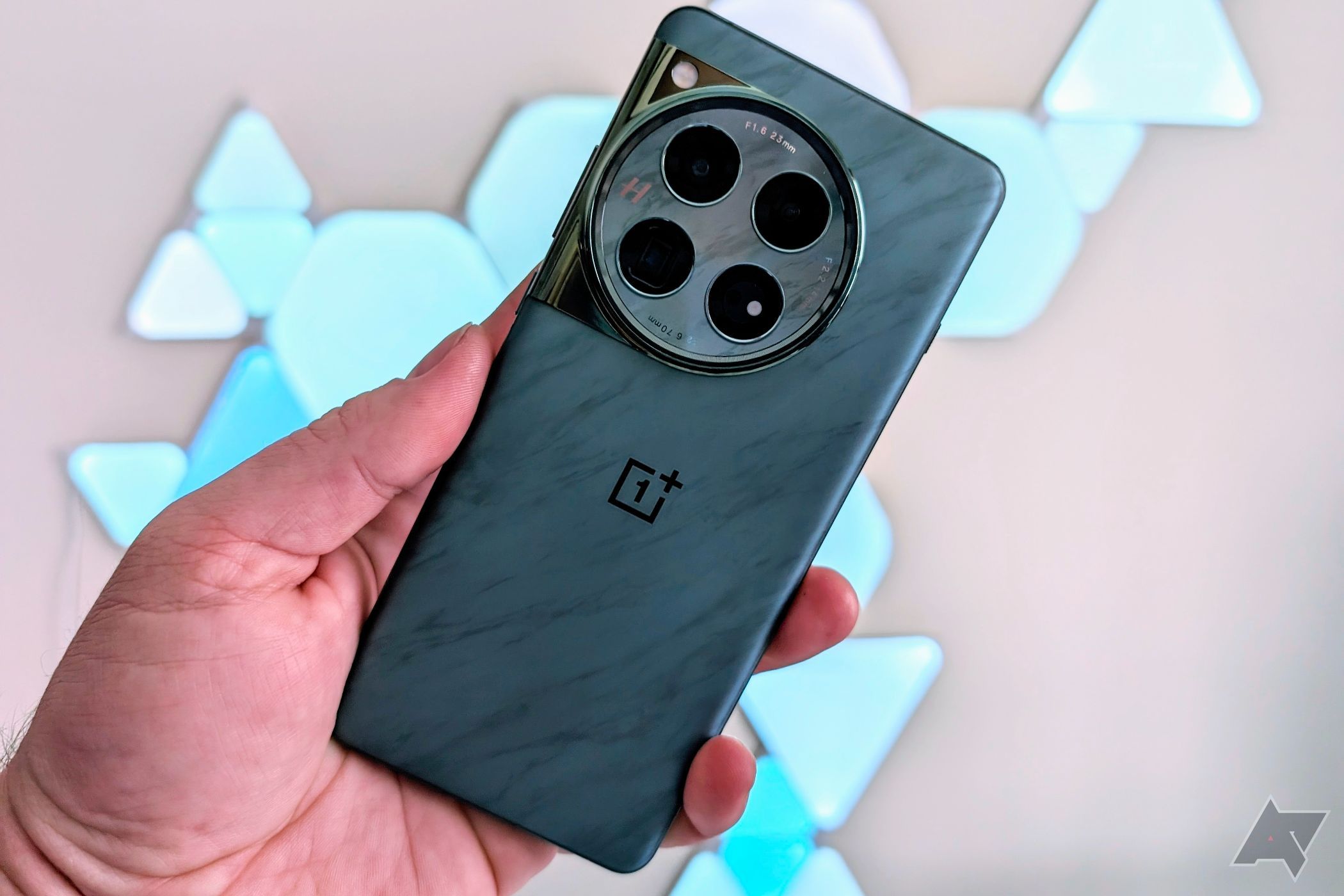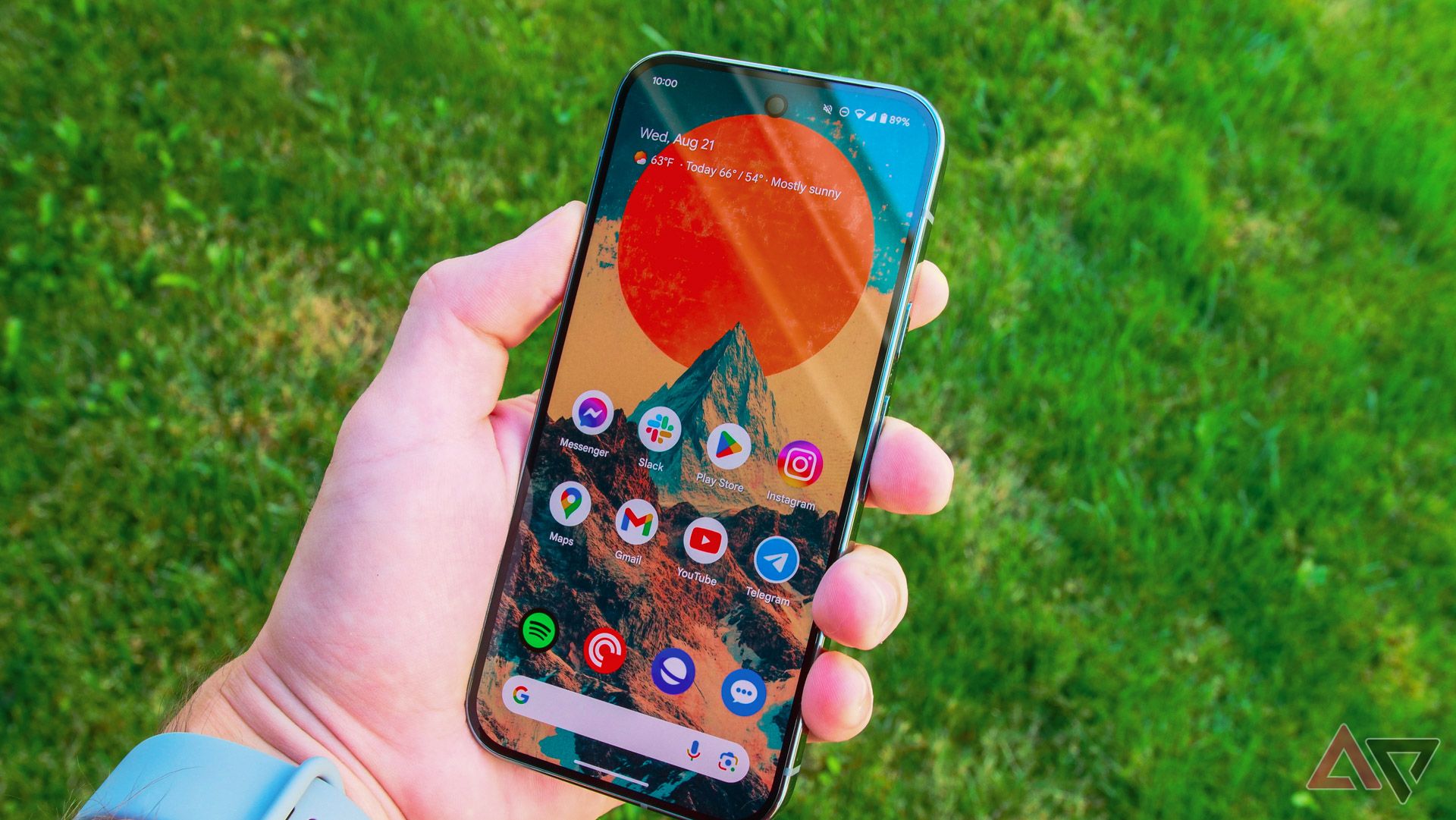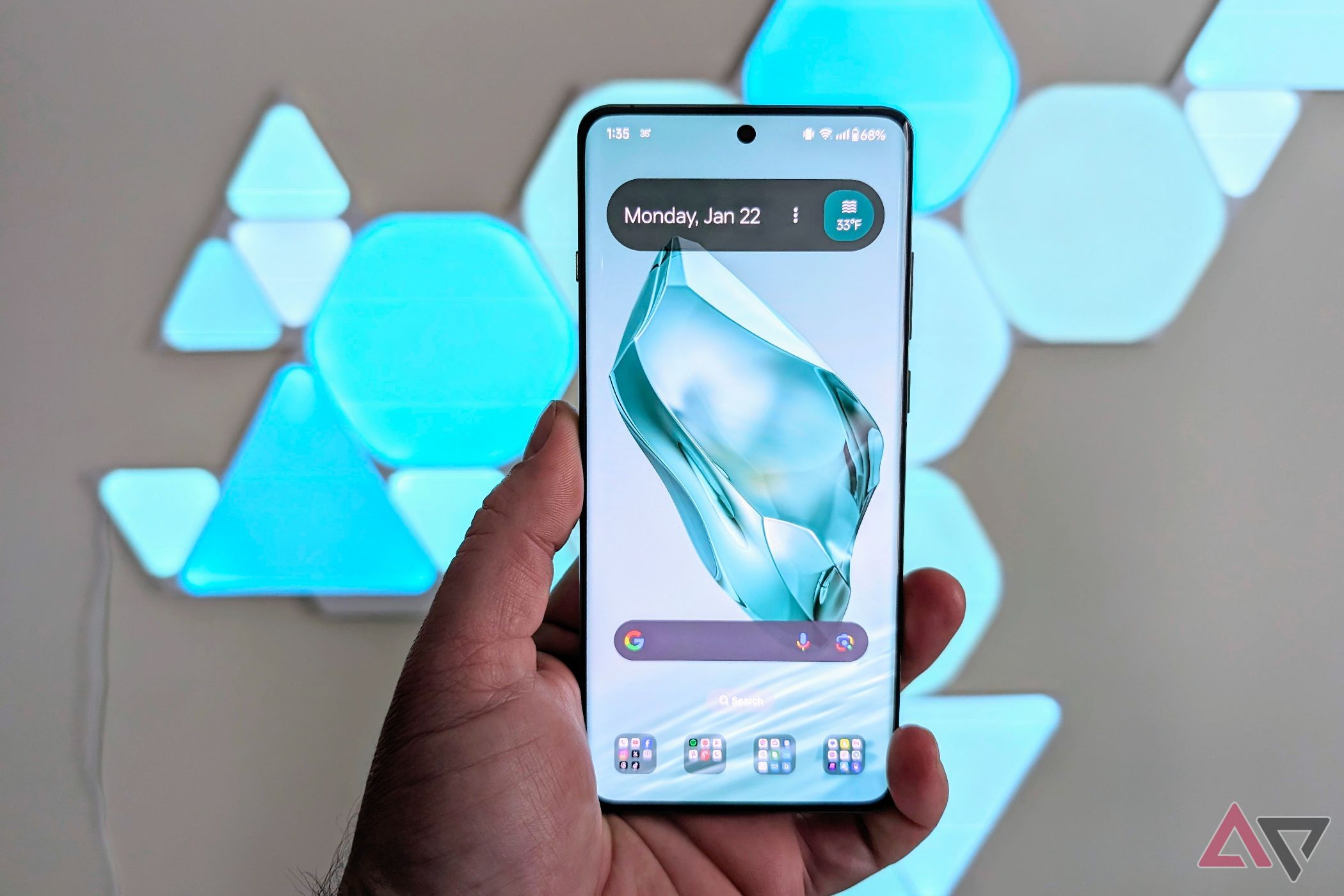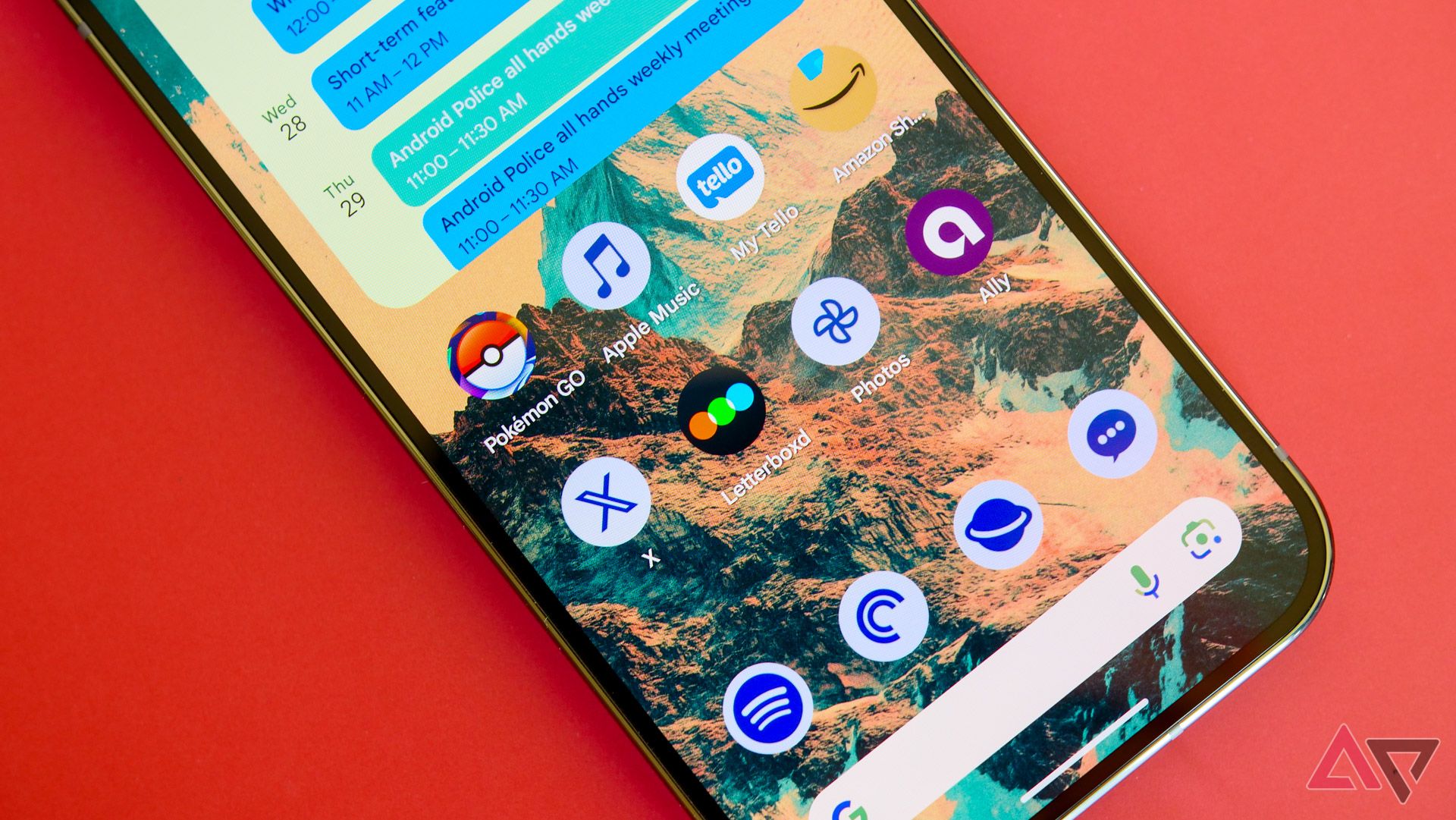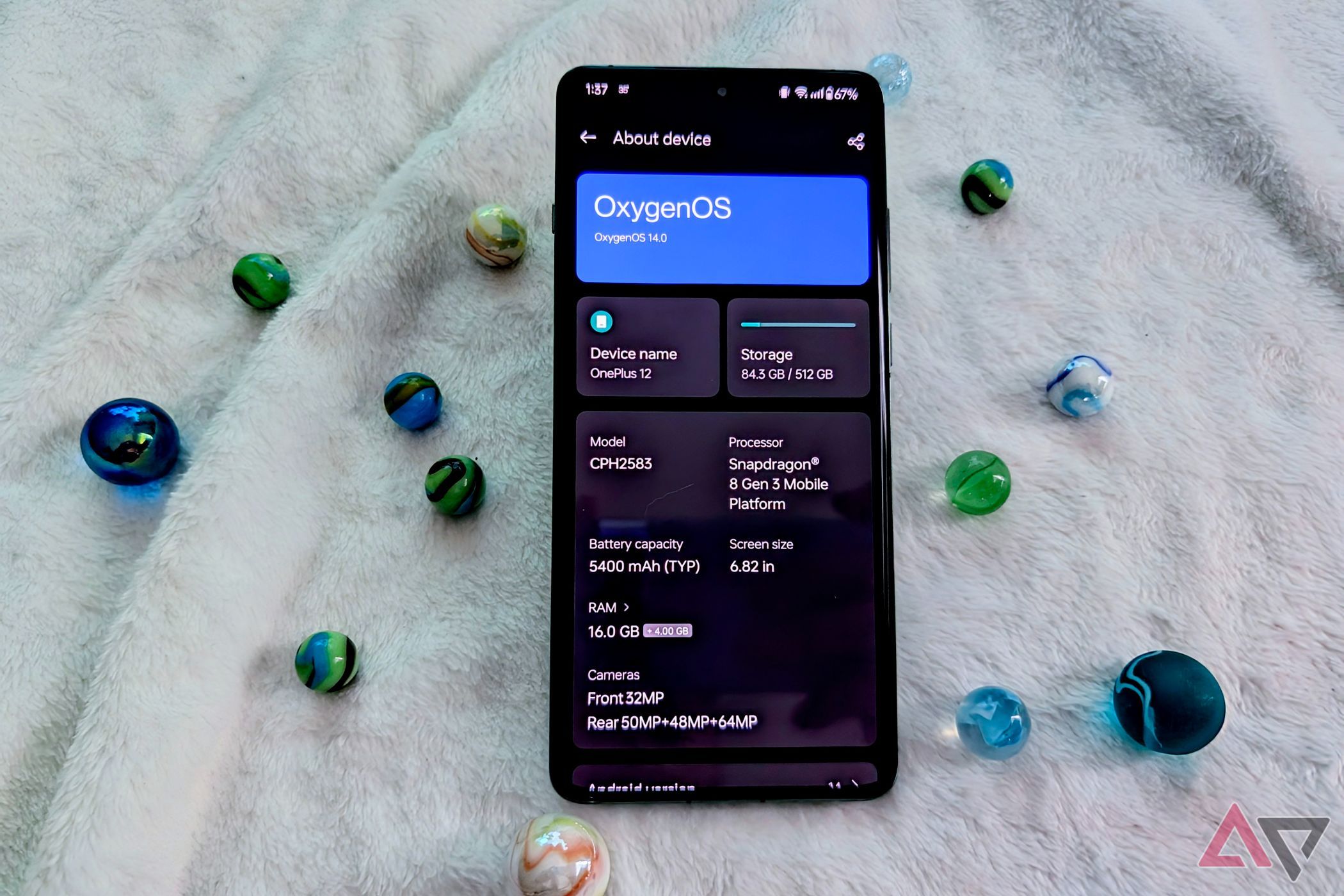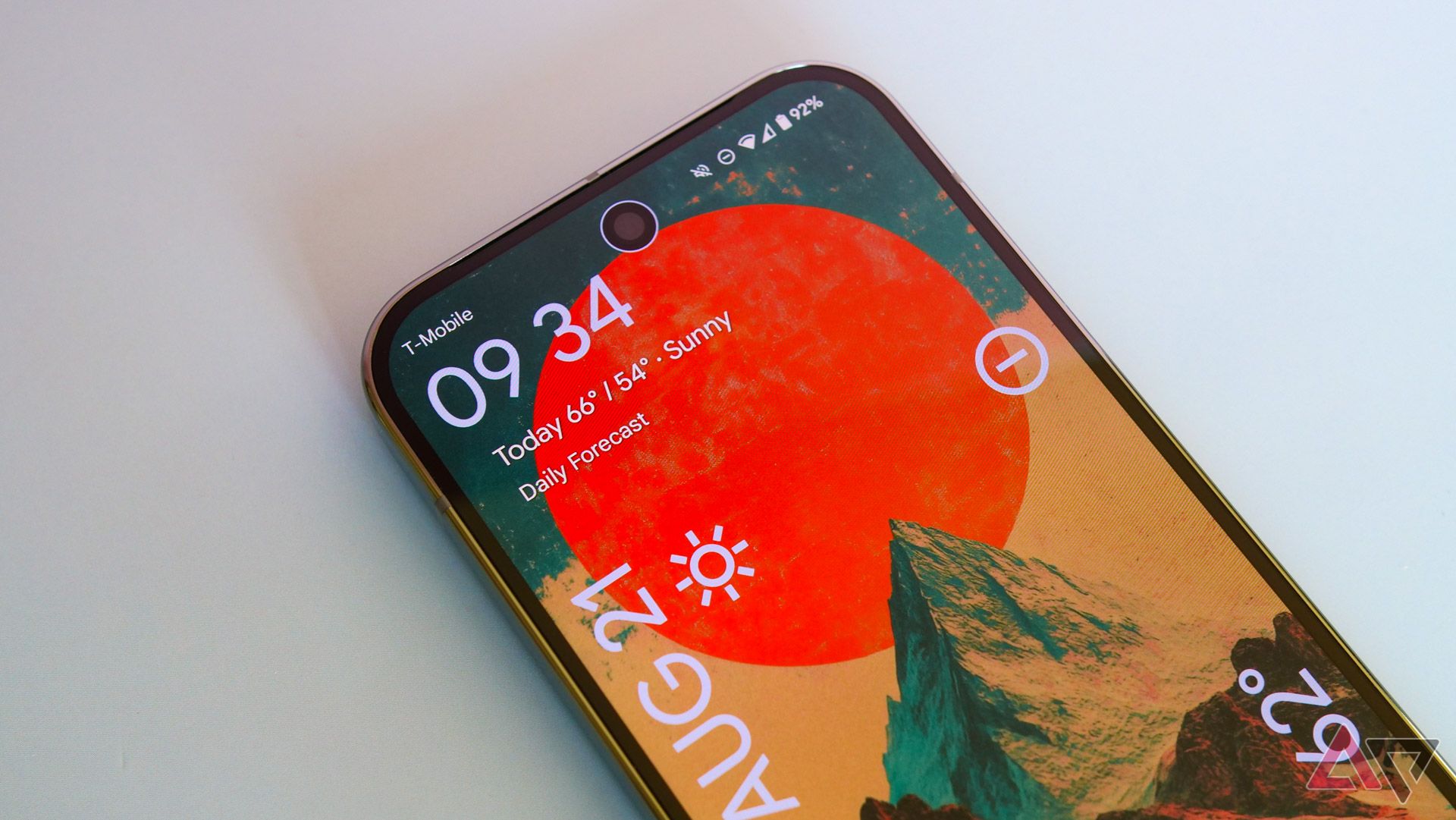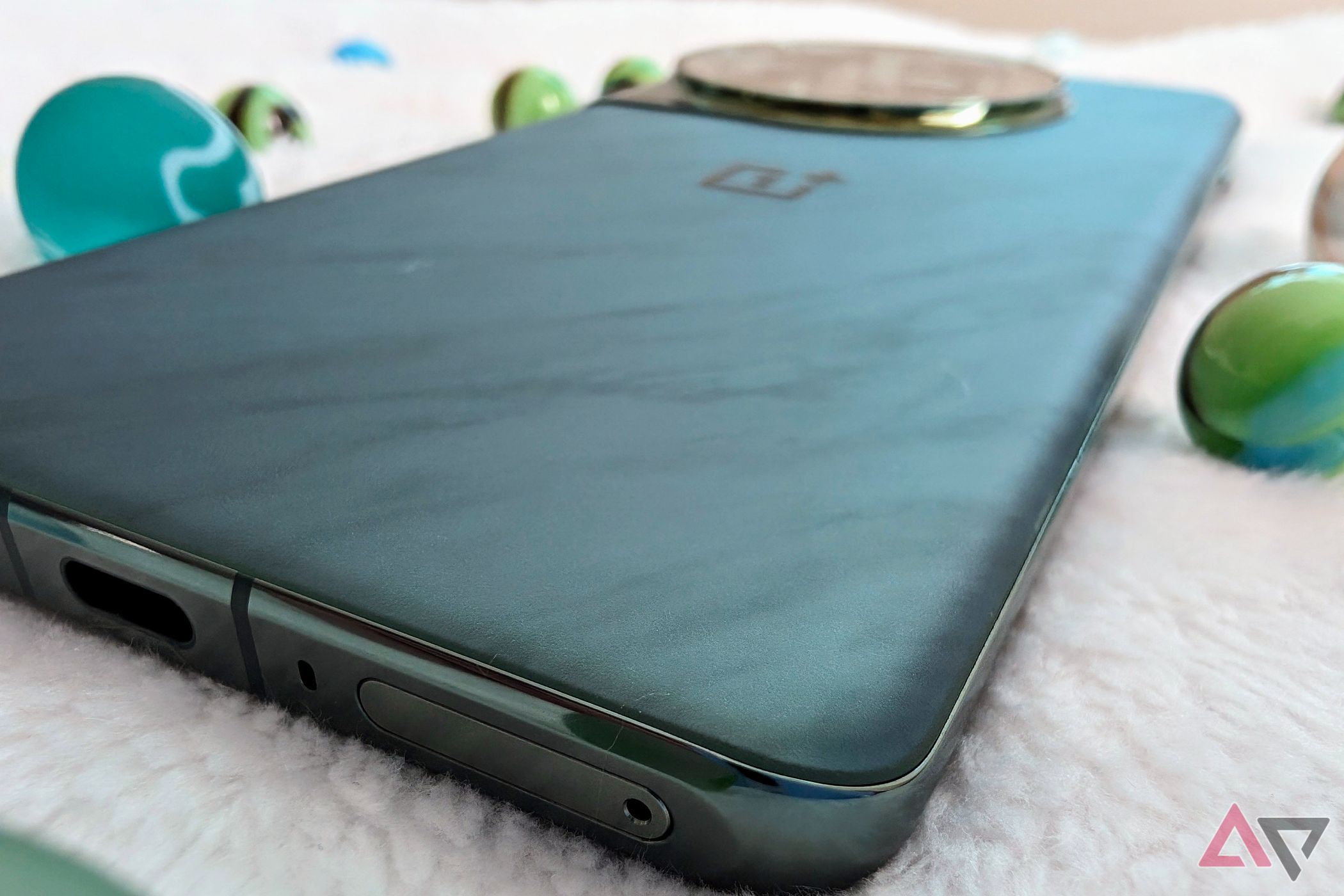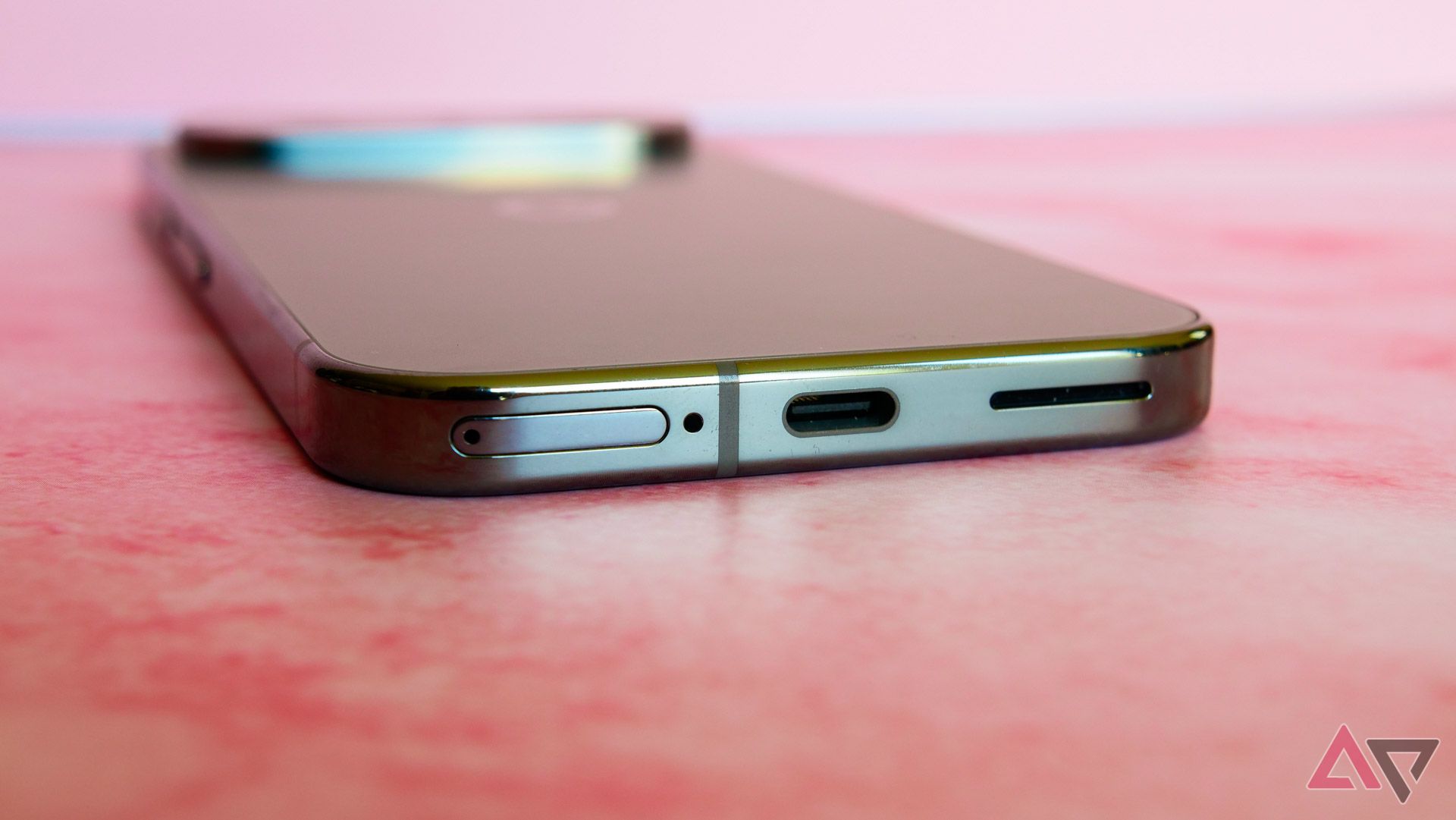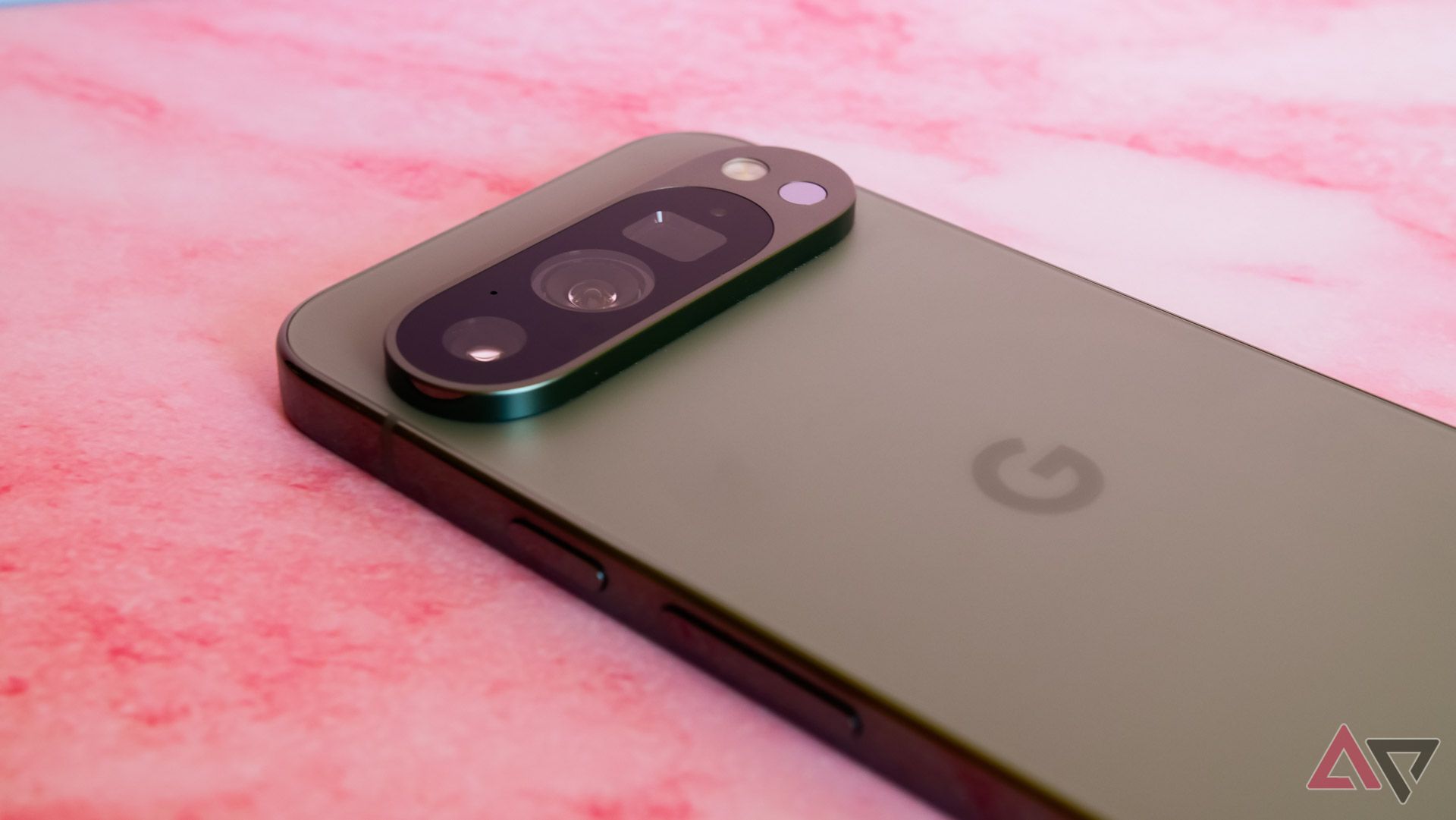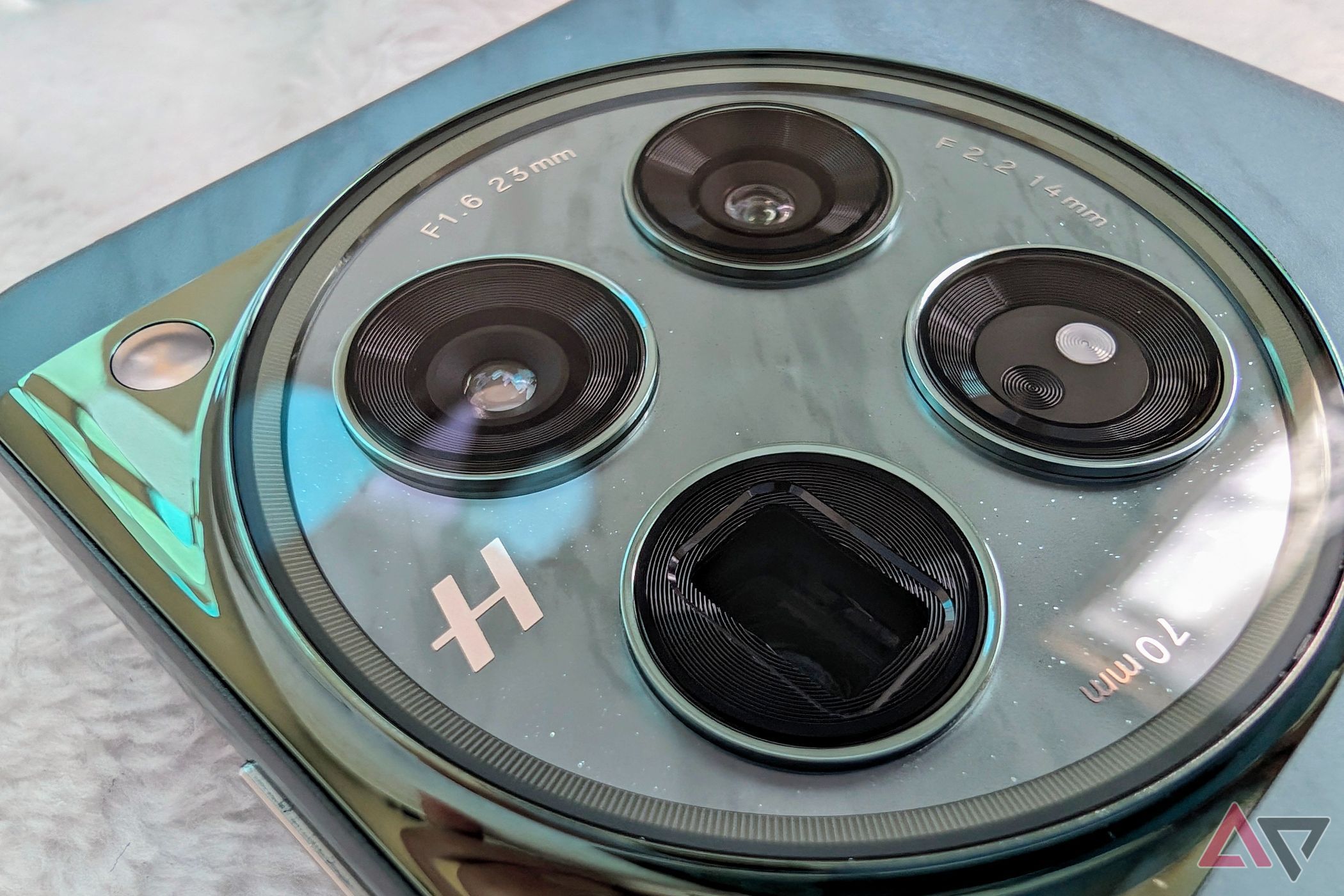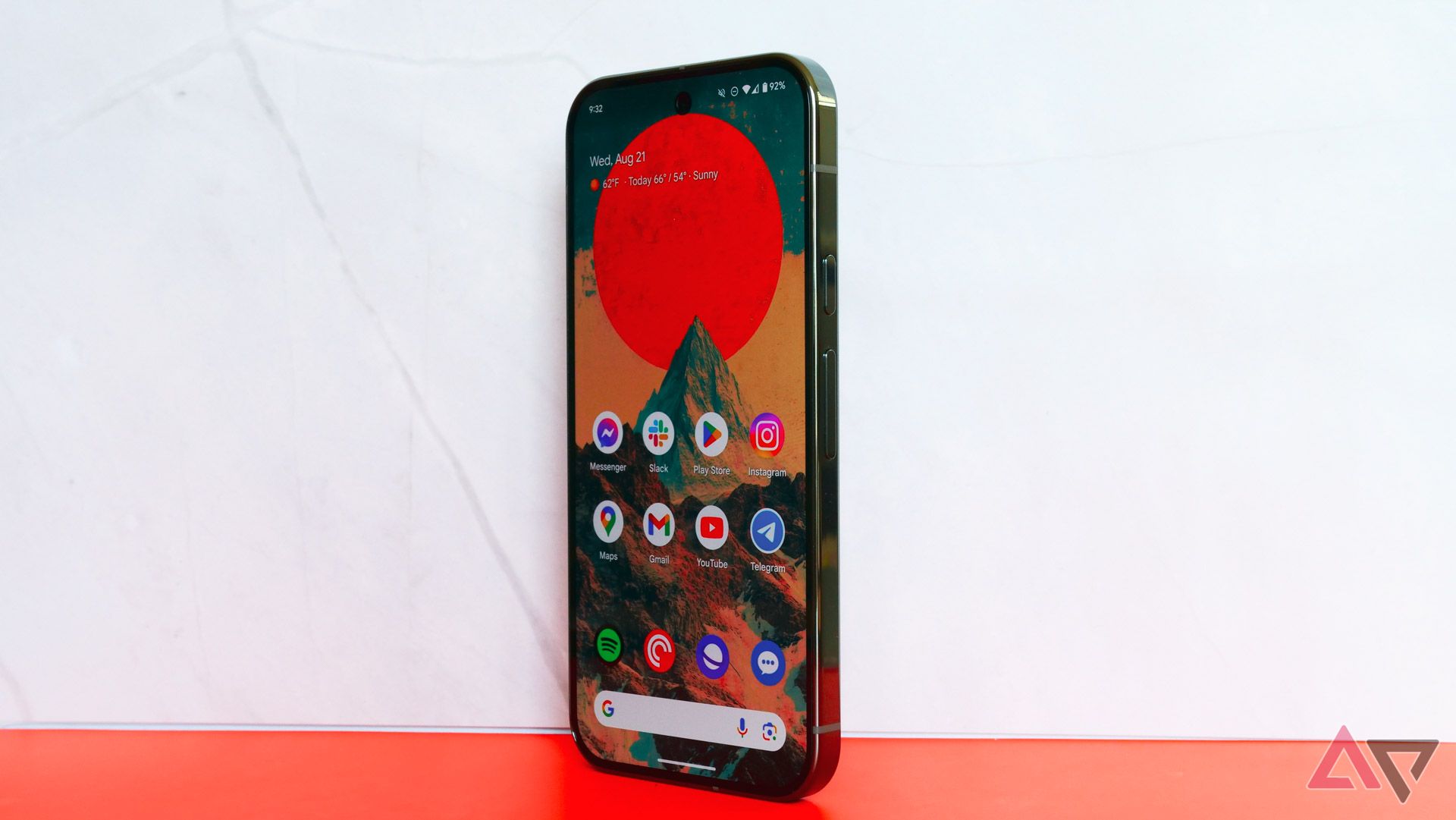-
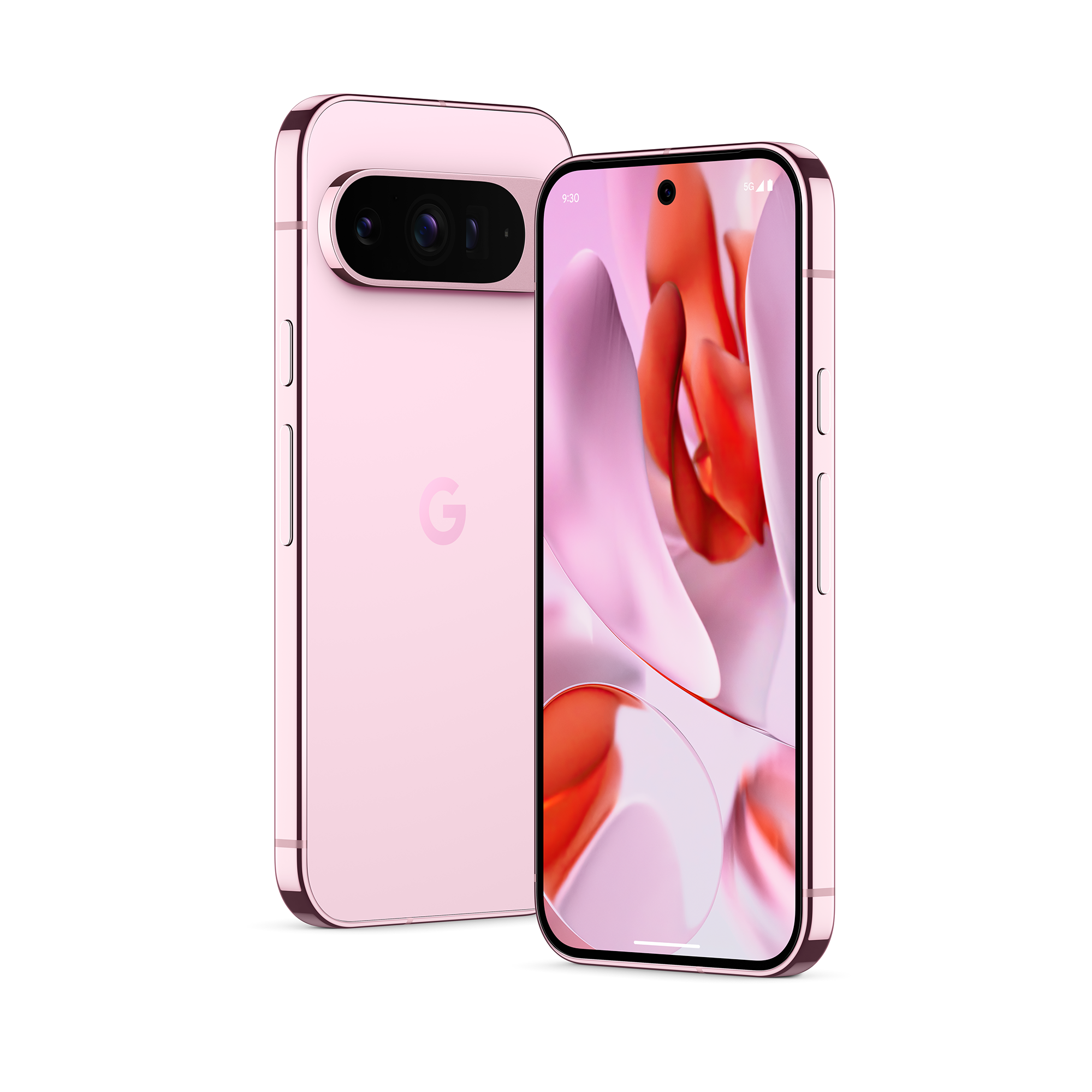
Flagship for the masses
Google Pixel 9 Pro
The Google Pixel 9 Pro epitomizes a refined flagship experience. Its elegant design, exceptional camera performance, long-term software support, and a wealth of AI-powered features, make it a compelling choice for users who value a polished and integrated ecosystem. The device’s compact size further enhances its appeal.
Pros- More manageable form factor
- Seven years of software support
- Pixel camera experience
Cons- Tensor G4 struggles under heavy use
- Base model has 128GB storage
- Slower wired charging
-
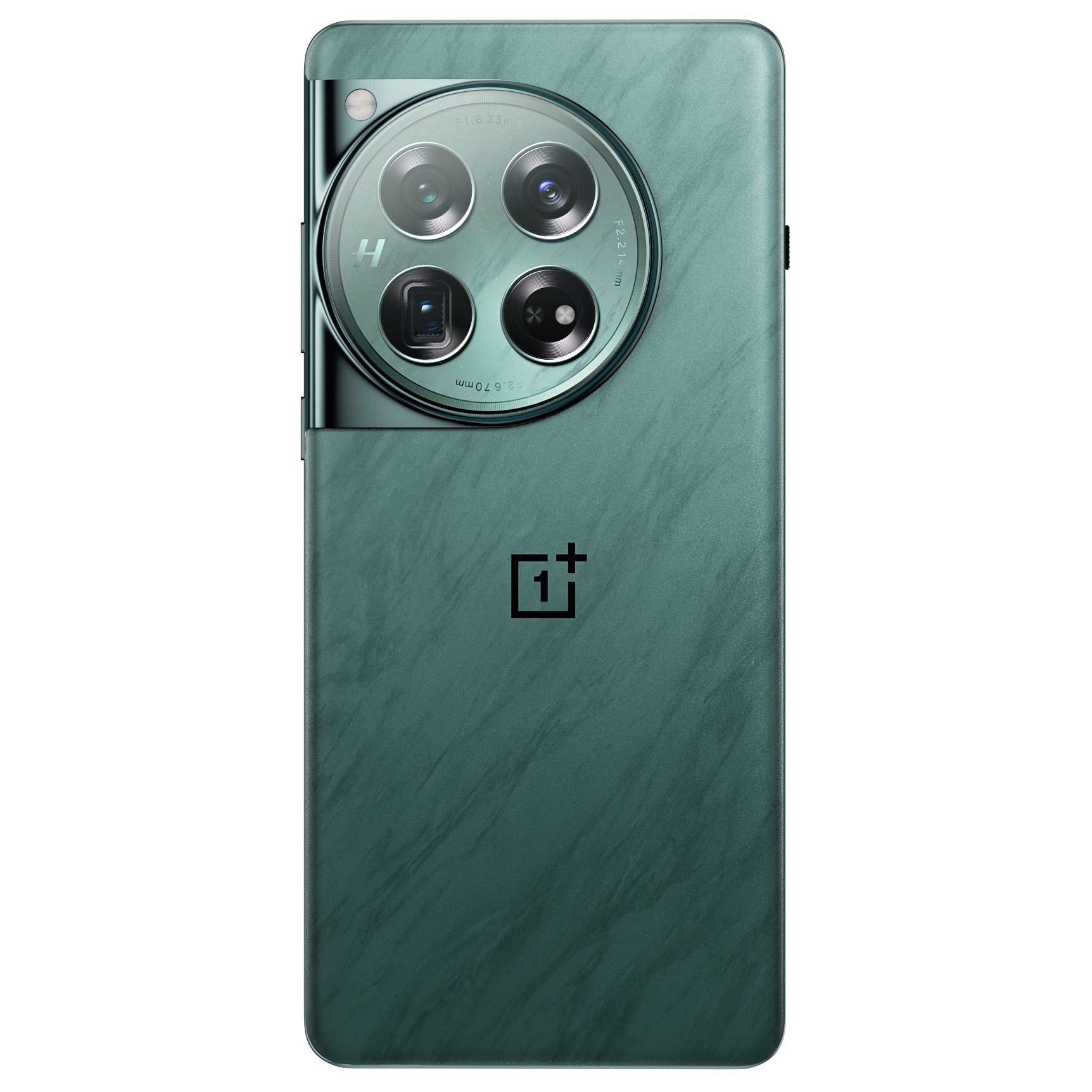
The performance flagship
OnePlus 12
$700 $800 Save $100
The OnePlus 12 is a flagship tailored to those who demand top-tier performance. Powered by the Snapdragon 8 Gen 3, it delivers superior speed and efficiency, complemented by impressive battery life and ultra-fast charging capabilities. While its camera system might not rival the Pixel’s, it comes surprisingly close.
Pros- Top-tier performance
- Long lasting battery
- Superfast charging
Cons- Shorter software support
- Cameras fall slightly behind
The Google Pixel 9 Pro and OnePlus 12 offer unique takes on what a top-tier phone should be. The Pixel 9 Pro is Google’s latest release, showcasing its most refined hardware and software to date. Meanwhile, the OnePlus 12 has been on the market for a bit longer, earning high praise for its performance and value.
These phones differ in many ways, from design to features, and a $200 price difference between them might influence your decision. In this guide, we’ll explore the key aspects of the Pixel 9 Pro and OnePlus 12, making it easier to choose the one that best fits your needs.
Price, availability, and specs
The Pixel 9 Pro, which launched at a Google event in August 2024, hit store shelves in September. Starting at $999 for the base model with a measly 128GB of storage and 16GB of RAM, the Pixel 9 Pro is undoubtedly priced as a premium device. For those needing more storage, Google offers a range of options, including 256GB for $1,099, 512GB for $1,219, and even a 1TB model for $1,499.
The Pixel 9 Pro is available in four colors: Obsidian, Porcelain, Hazel, and the new Rose Quartz, although not every color is available for each storage configuration. You can purchase it through major US carriers, Google’s Fi network, or unlocked from retailers like Best Buy and Amazon.
On the other hand, the OnePlus 12 has been available in the US since January 2024. It comes in two configurations: the Silky Black model with either 12GB RAM and 256GB storage for $800 or 16GB RAM with 512GB of storage for $900. There’s also a Flowy Emerald variant, available exclusively in the 16GB RAM with 512GB configuration, priced at $900.
While the OnePlus 12 isn’t available through carrier stores, you can purchase it unlocked from Amazon and the OnePlus website. Additionally, OnePlus frequently runs promotions, such as offering the 512GB model at the same price as the 256GB or bundling the OnePlus Buds Pro 2 for free, making it a compelling choice for budget-conscious buyers.
-
Google Pixel 9 Pro OnePlus 12 SoC Google Tensor G4 Qualcomm Snapdragon 8 Gen 3 Display type LTPO OLED, 1-120Hz LTPO AMOLED, 1-120Hz Display dimensions 6.3″ 6.82″, 19.8:9 Display resolution 1280 x 2856 3168 x 1440 RAM 16GB 12GB or 16GB Storage 128GB, 256GB, 512GB, or 1TB 256GB or 512GB Battery 4,700mAh 5,400mAh Charge speed 27W wired, 21W wireless 80W wired (100W international), 50W wireless Charge options USB-C wired, Qi wireless USB-C SuperVOOC wired, AirVOOC wireless, reverse charging Ports USB-C USB-C SIM support Nano-SIM and eSIM Dual nano-SIM slot Operating System Android 14 Android 14 with OxygenOS 14 Front camera 42MP, f/2.2 32MP, f/2.4 Rear camera 50MP, f/1.7, OIS main; 48MP, f/1.7 ultrawide; 48MP, f/2.8, 5x telephoto 50MP, f/1.6, OIS main; 48MP, f/2.2 ultrawide; 64MP, f/2.6, OIS, 3x telephoto Wi-Fi connectivity Wi-Fi 7 Wi-Fi 7 Bluetooth Bluetooth 5.3 Bluetooth 5.4 Dimensions 152.8 x 72 x 8.5mm 164.3 x 75.8 x 9.2mm Weight 199g 220g IP Rating IP68 IP65 Colors Obsidian, Porcelain, Hazel, Rose Quartz Flowy Emerald, Silky Black Price From $999 From $800
Design
Beauty or the beast?
Starting with the OnePlus 12, the device bucks the current trend of flat-edged designs popularized by iPhones in recent years. Instead, OnePlus has opted for a curved front and back, which makes the phone feel slimmer in hand than its actual dimensions suggest. This is a welcome feature, especially considering that the OnePlus 12 is a large device — significantly taller and wider than the Pixel 9 Pro and about 20 grams heavier. The phone’s circular camera island is another distinctive design choice, although it might not appeal to everyone.
In contrast, the Pixel 9 Pro embraces the flat-edged aesthetic popularized by iPhones, even pushing it further to achieve a near-identical look and feel. This design choice, while polarizing, is likely to resonate with a broad audience. It’s one of the most well-built Pixel phones yet, featuring a premium frosted glass back, a redesigned camera bar with flat edges, and shiny aluminum rails that exude a flagship feel. The Pixel 9 Pro is also more compact than the OnePlus 12, making it easier to handle, though it’s still not what you’d call a “compact” phone.
Beyond aesthetics, the Pixel 9 Pro also gains an edge in build quality. It uses Gorilla Glass Victus 2 on the front and back, while the OnePlus 12 uses Gorilla Glass Victus 2 on the front and an older Gorilla Glass on the back. Additionally, the Pixel 9 Pro boasts an IP68 rating, providing full protection against dust and water submersion. In contrast, the OnePlus 12 has an IP65 rating, which means it can withstand water sprays but isn’t rated for full submersion.
Display
Size makes a difference
The Pixel 9 Pro has a 6.3-inch Super Actua OLED display with a resolution of 1280 × 2856 pixels. Its LTPO technology allows for a dynamic refresh rate that can vary from 1Hz to 120Hz, ensuring smooth performance while conserving battery life. In contrast, the OnePlus 12 offers a larger 6.82-inch LTPO AMOLED display with 1440p resolution and a variable refresh rate from 1Hz to 120Hz. This screen supports HDR and also adds Pro XDR and Dolby Vision to the mix.
One of the standout features of the OnePlus 12 is its eye-friendly PWM dimming at 2160Hz, a feature that has yet to be adopted by manufacturers like Google and Samsung. While the display’s curved edges might occasionally result in ghost touches, this issue is relatively minor.
The OnePlus 12’s display truly shines with a peak brightness of 4500 nits, making it the brightest on the market. However, its regular brightness of 1600 nits in HBM falls slightly short of the Pixel 9 Pro’s 2000 nits. In practical terms, the displays are exceptionally bright and easily viewable, even in direct sunlight. OnePlus 12 also has a new Aqua Touch feature. This technology improves touchscreen responsiveness when fingers or the display is wet, and it proved effective in our tests.
In terms of audio, the phones feature stereo speakers, utilizing a downward-firing speaker and the earpiece for balanced sound. The Pixel 9 Pro also incorporates an ultrasonic fingerprint scanner, offering better security and slightly faster unlocks compared to the OnePlus 12’s optical scanner.
Software
How much AI do you need?
The Pixel 9 Pro could have had an advantage over the OnePlus 12 by launching with Android 15 right away, but both phones come with Android 14 out of the box. That shouldn’t be a problem, though, as Google promises an impressive seven years of OS and security updates for the Pixel 9 Pro. While the OnePlus 12 offers a respectable four years of OS upgrades and an additional year of security updates, it falls short for those who plan to keep their phone for an extended period.
Beyond updates, the Pixel 9 Pro leans heavily on AI-driven features, a core part of its identity. These features range from enhanced photo editing to intelligent automation, improving various aspects of the user experience. The Pixel 9 Pro even boasts on-device Gemini capabilities, ensuring certain AI tasks run locally without relying on the cloud. Additionally, as Google continues to innovate in AI, you can expect the Pixel 9 Pro to receive all the latest advancements.
OnePlus’s OxygenOS provides a clean, fast, and customizable experience. While OnePlus has begun to incorporate some AI features into its software, such as AI-enhanced photo editing, these offerings are relatively basic compared to the Pixel’s extensive AI suite. That being said, it still delivers a smooth and responsive interface that many users will appreciate.
Choosing between these software experiences boils down to your priorities. If you value AI-powered features and long-term support, the Pixel 9 Pro is the clear winner. If you prefer a clean and efficient interface without excessive AI integration, the OnePlus 12 is a compelling alternative.
Performance and battery life
One-horse race
The Pixel 9 Pro is powered by Google’s latest Tensor G4 SoC and the Titan M2 security coprocessor. While Tensor chips haven’t been known for raw power, the G4 brings some welcome improvements over the previous Tensors. In everyday use, the Pixel 9 Pro remains cool for most tasks, and the 16GB RAM ensures smooth multitasking. However, the chip occasionally gets warm, which, although noticeable during our review, was more manageable than previous Tensor models.
In contrast, the OnePlus 12 features the Snapdragon 8 Gen 3 chipset, which delivers superior performance, even though it has been on the market for over six months. Additionally, the OnePlus 12 benefits from the latest UFS 4.0 internal storage, compared to the Pixel 9 Pro’s UFS 3.1, further enhancing performance.
While the Pixel 9 Pro holds its own in day-to-day tasks, the difference between the Snapdragon 8 Gen 3 and Tensor G4 becomes apparent in gaming or intensive tasks. The OnePlus 12 offers faster, more sustained performance, meeting the needs of power users.
Battery life is another area where the OnePlus 12 shines. Its larger 5,400mAh battery, combined with the Snapdragon’s efficiency, results in outstanding endurance. The OnePlus 12 comfortably lasts a full day with heavy use and can even stretch to two days with lighter usage.
While improved over its predecessors, the Pixel 9 Pro’s battery endurance still lags behind the OnePlus 12. It can deliver around 5 hours of screen-on time, which is decent but falls short of the OnePlus 12’s longevity. Expect a full day of use with the Pixel 9 Pro, but heavy usage might require a charger before the day ends.
The OnePlus 12 also comes with a fast charger in the box, capable of taking the phone from 0 to 100% in approximately 30 minutes. It supports 50W wireless charging with OnePlus’s AirVOOC charger, although this feature is limited to its proprietary hardware.
Unfortunately, the Pixel 9 Pro uses the same 27W charging as its predecessors, taking well over an hour for a full charge. Its wireless charging speeds also fall short, reaching a maximum of 21W with the Pixel Stand and dropping to 12W with other wireless chargers.
Overall, the OnePlus 12 takes a decisive lead in performance and battery. Its superior chipset, faster storage, longer battery life, and rapid charging capabilities make it a powerhouse. The Pixel 9 Pro’s performance is still commendable for everyday use, but for users who prioritize these aspects, the OnePlus 12 clearly has the upper hand.
Camera
Not as straightforward as you’d think
The Pixel series has long been celebrated for its camera prowess, setting a high standard in mobile photography. In contrast, OnePlus has often lagged behind competitors like Google and Samsung in this area. While these generalizations hold true for the Pixel 9 Pro and OnePlus 12, the gap today is narrower than ever.
Let’s delve into the hardware. The Pixel 9 Pro boasts a 50MP primary sensor, a 48MP telephoto lens, and an upgraded 48MP ultrawide lens with a 123-degree field of view. OnePlus 12 counters with a 50MP main camera, a 64MP ultrawide lens with a narrower 114-degree field of view, and a 64MP telephoto lens offering 3x optical zoom. Its Hybrid Zoom feature further extends its reach, achieving up to 6x lossless zoom through a combination of hardware and software.
For selfies, the Pixel 9 Pro introduces a new 42MP front-facing camera with autofocus, surpassing the OnePlus 12’s fixed-focus 32MP selfie camera. Google’s acclaimed image processing software continues to give the Pixel 9 Pro an edge in overall photo quality as well. AI features like Add Me, refreshed Panorama mode, and Magic Editor further enhance its camera capabilities.
However, the OnePlus 12’s camera performance is nothing to scoff at. It marks a significant improvement for OnePlus, delivering impressive results that will please most users. The Hasselblad collaboration adds a touch of finesse, with its signature color science and dedicated shooting modes.
While both phones capture photos that will satisfy most users, the Pixel 9 Pro remains the gold standard for effortless and reliable photography.
Which is right for you?
Two definitions of flagship
The Pixel 9 Pro and OnePlus 12 represent two distinct paths to flagship smartphone excellence, each catering to a different type of user. The Pixel 9 Pro is the quintessential mass-market flagship. Priced at $999, it’s packed with features that justify its cost, including an IP68 rating for durability, a commitment to seven years of software updates, a top-tier camera system that arguably leads the industry, and a wealth of AI-powered features. Its design is elegant and more manageable in hand compared to other oversized flagships, making it an appealing choice for those who prioritize a well-rounded, versatile smartphone experience.

Flagship for the masses
Google Pixel 9 Pro
Everyday reliable companion
The Pixel 9 Pro is ideal for those who want a flagship phone that excels in software, camera performance, and build quality while being relatively easy to handle compared to larger alternatives. This phone offers a well-rounded flagship experience, offering a strong emphasis on photography and smart AI capabilities.
However, the Pixel 9 Pro isn’t without compromises. Raw performance isn’t its forte, and it might struggle with demanding tasks like intensive gaming. The device’s charging speeds and battery life are adequate but not exceptional. Moreover, the 128GB base storage might feel restrictive for some, pushing them toward the pricier 256GB model.
On the other hand, the OnePlus 12 is tailored to users who demand peak performance from their smartphones. Equipped with the latest and most powerful chipset, it excels in speed and efficiency, offering battery life that comfortably lasts over a day and incredibly fast charging. While its camera system might not quite reach the heights of the Pixel, it’s impressively close, especially considering its price point. Moreover, the OnePlus 12’s value proposition is hard to beat, especially with discounts bringing the price down to as low as $650.

The performance flagship
OnePlus 12
Best device for your needs and budget
$700 $800 Save $100
The OnePlus 12 is a powerhouse designed for those who demand the absolute best in performance. Its unmatched speed, impressive battery life, and rapid charging capabilities make it a top contender for power users and gamers. It is one of the best bang-for-your-buck smartphones on the market.
Source link
